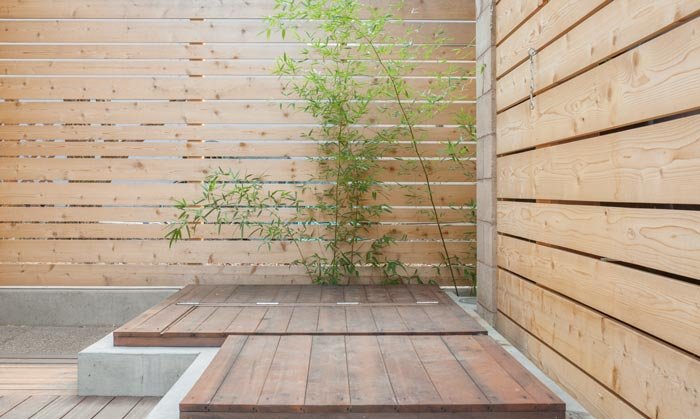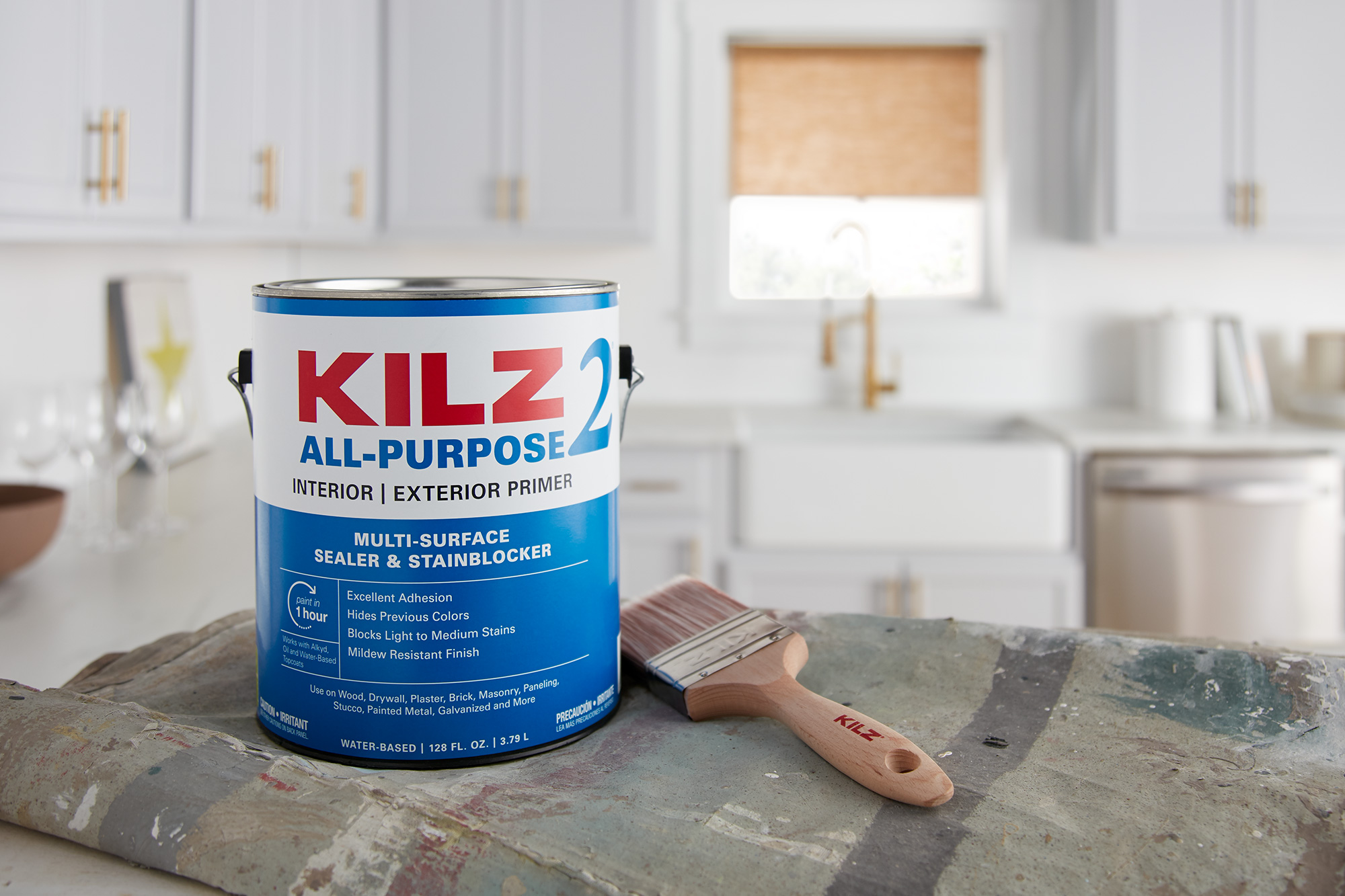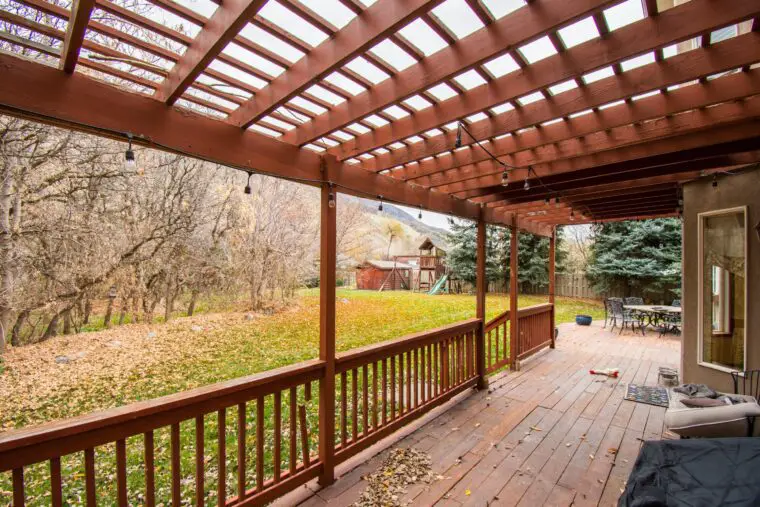Exterior finish for wood enhances its appearance and protects it from weather damage. The right finish can prolong the life of the wood and provide a beautiful, long-lasting finish.
Whether you are applying paint, stain, or varnish, choosing the right product and applying it correctly is essential for optimal results. We will explore different types of exterior finishes for wood and provide tips on how to ensure a successful and durable finish.
So, let’s dive in and learn how to protect and beautify your wooden surfaces.

Credit: anthologywoods.com
Choosing The Right Finish
Selecting the appropriate exterior finish for wood is crucial in protecting it from the elements and prolonging its lifespan. Consider options like oil-based finishes for a natural look, or acrylic and latex paints for a durable, low-maintenance choice. Understanding the specific needs of the wood and the climate will help in making the right decision.
Considerations For Exterior Finishes
When it comes to choosing the right finish for your wood exterior, there are a few key considerations to keep in mind. The exterior finish not only adds visual appeal but also protects the wood from the elements. Whether you’re working with a deck, fence, or siding, selecting the appropriate finish can significantly extend the lifespan of your investment.
Different Types Of Exterior Finishes
There are several types of exterior finishes available, each with its own unique qualities and benefits. Here are some of the most common options to consider:
- Paint: A popular choice for wood exteriors, paint offers a wide range of colors and provides excellent protection against moisture and UV rays. Paint can hide imperfections and evenly coat the wood surface.
- Stain: Stains come in various colors and can enhance the natural beauty of the wood grain. They penetrate the wood, protecting it from water damage, while still allowing the texture and character of the wood to show through.
- Varnish: Varnish is known for its high gloss finish and superior durability. It creates a protective layer on the wood surface, shielding it from moisture, UV rays, and general wear and tear. Varnish works best on surfaces that require a glossy and long-lasting finish.
- Sealer: A sealer is a clear finish that helps protect the wood by forming a barrier against water, sunlight, and mildew. It allows the wood to breathe while providing water repellency. Sealers are often used on decks and fences.
With these different types of exterior finishes in mind, you can now make an informed decision about which one suits your needs best. Consider the desired look, level of protection, and maintenance requirements when making your choice. Remember, a properly applied finish not only enhances the appearance of your wood exterior but also prolongs its lifespan, saving you time and money in the long run.
Preparation And Application
Discover the perfect exterior finish for wood with our comprehensive guide to preparation and application. Enhance the beauty and longevity of your wooden surfaces with expert tips and techniques for a flawless and long-lasting finish.
Wood Surface Preparation
Properly preparing the wood surface is crucial before applying any exterior finish. This step ensures the longevity and durability of the finish, protecting the wood from moisture, UV rays, and other weather elements. Here are a few key steps to follow when preparing the wood surface:
-
- Clean the wood thoroughly: Begin by cleaning the wood surface using a gentle wood cleaner or a solution of mild soap and water. This helps remove dirt, dust, and any existing finishes or coatings.
-
- Sand the wood: After cleaning, sand the wood surface using fine-grit sandpaper. Sanding helps to smooth out any rough spots, splinters, or imperfections, creating a clean and even surface for the finish to adhere to.
-
- Remove any remaining sawdust: To ensure proper adhesion of the finish, it is essential to remove any leftover sawdust from the sanding process. You can use a clean cloth or a tack cloth to wipe away the sawdust, ensuring a smooth and debris-free surface.
- Apply a wood conditioner: In some cases, it may be necessary to use a wood conditioner, particularly if you are working with a porous type of wood. A wood conditioner helps to seal the wood and improve the absorption of the finish, ensuring a more uniform and attractive final result.
Proper Application Techniques
When it comes to applying an exterior finish on wood, the right techniques can make a significant difference in the final outcome. Follow these tips to ensure a successful application:
-
- Choose the right brush or spray: Selecting the appropriate applicator for your chosen finish is essential. A high-quality brush or sprayer ensures even and smooth coverage, minimizing the risk of drips or streaks.
-
- Apply multiple thin coats: Instead of applying one thick coat, it’s best to apply multiple thin coats of the finish. This allows each layer to dry and adhere properly, creating a stronger and more durable protective barrier.
-
- Follow the manufacturer’s instructions: Each exterior finish may have specific instructions regarding the ideal temperature, humidity levels, and drying time. It is crucial to carefully read and follow these guidelines for the best results.
- Allow sufficient drying time: After applying the finish, allow sufficient drying time before subjecting the wood to any moisture or other elements. Proper drying ensures that the finish has cured completely and offers the maximum protection to the wood surface.
Maintenance And Repair
The exterior finish of wood plays a vital role in maintaining the aesthetics and durability of wooden structures. To ensure the longevity of the exterior finish, proper maintenance and timely repairs are essential.
Regular Maintenance Practices
Regular maintenance of the wood’s exterior finish is crucial in preserving its appearance and structural integrity. Below are some key practices for regular maintenance:
- Cleaning: Regularly cleaning the wood surface with a mild detergent and water helps to remove dirt, debris, and mildew that can degrade the finish.
- Inspection: Periodically inspecting the wood for any signs of wear, peeling, or cracking can help identify areas that require immediate attention.
- Reapplication: Depending on the type of finish, reapplication of protective coatings or sealants at recommended intervals can enhance the wood’s longevity.
Repairing And Refinishing
Repairing and refinishing the exterior finish of wood is crucial to address any damage and prolong the life of the finish. Here are some effective methods for repairing and refinishing the wood:
- Spot Treatments: Addressing small areas of damage promptly through sanding, priming, and recoating can prevent further deterioration.
- Complete Refinishing: When significant wear or damage is present, complete refinishing involving stripping the old finish, sanding, and applying a new finish may be necessary.
- Sealing and Waterproofing: Applying a quality sealant or waterproofing product after repairs can provide additional protection against moisture and UV damage.
Environmental Factors
When considering the exterior finish for wood, it is crucial to understand the impact of environmental factors on its longevity and appearance.
Impact Of Sunlight And Uv Exposure
Sunlight and UV exposure can cause the exterior finish of wood to fade and deteriorate over time.
Effects Of Moisture And Weathering
Moisture and weathering can lead to rot, mold, and warping of wood surfaces, affecting the durability and aesthetic appeal.
Choosing The Right Products
When it comes to exterior finishes for wood, choosing the right products is essential for long-lasting protection and aesthetics.
Selecting Quality Wood Finishes
Selecting a quality wood finish ensures durability and enhances the natural beauty of the wood grain.
- Look for finishes that provide UV protection to prevent fading and discoloration.
- Consider water-based finishes for easier application and environmental friendliness.
Eco-friendly And Sustainable Options
Opting for eco-friendly wood finishes not only benefits the environment but also your health and well-being.
- Choose finishes with low VOC content to reduce harmful emissions.
- Explore sustainable options such as linseed oil or natural wax finishes.

Credit: www.kilz.com

Credit: www.bigrentz.com
Frequently Asked Questions On Exterior Finish For Wood
What Is The Best Finish For Exterior Wood?
The best finish for exterior wood is a durable and weather-resistant coating, such as acrylic or oil-based paint, or a clear protective sealant. These finishes provide excellent protection against moisture, UV rays, and wood rot, ensuring the longevity and beauty of your exterior wood surfaces.
What Is The Best Top Coat For Exterior Wood?
The best top coat for exterior wood is a high-quality, UV-resistant, weatherproof varnish. It provides durability and protection against the elements. Regular maintenance and reapplication are key for long-lasting results. Be sure to choose a product specifically designed for outdoor use.
What Can I Put On Wood To Protect It Outside?
To protect wood outside, use a quality outdoor wood sealant or varnish. Regularly reapply for best results.
What Is One Finish Used For Outdoor Wood?
One finish used for outdoor wood is polyurethane. It provides protection against UV rays, moisture, and wear.
Conclusion
Choosing the right exterior finish for wood plays a crucial role in protecting and enhancing the look of your wooden surfaces. With various options available, it’s important to consider factors such as durability, maintenance, and aesthetic appeal. By making an informed decision, you can ensure the longevity and beauty of your wood exteriors.


